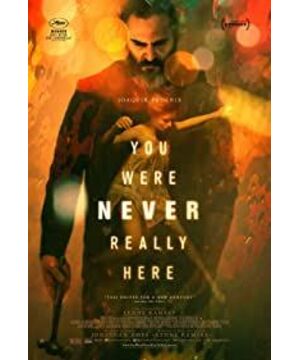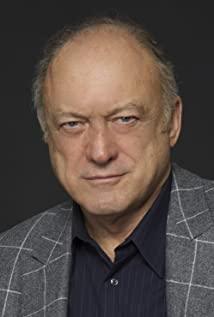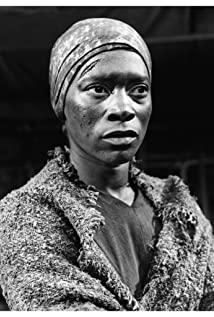I often think about a question, what exactly should a movie look like?
If every movie has a face, the movie should also be like a human being. Each movie has its own personality and is a unique existence in the world.
If you have watched "Taxi Driver" and "This Killer Is Not So Cold", but when the same story is in the hands of Director Lynn Ramsey, it has become a different look.
Many directors choose to tell stories honestly, putting narrative first. There are also directors who don't do this, they prefer to be independent.
In Ramsey's case, the story of the contract killer and the prostitute is another story, and everything in it is anti-type.
Joaquin Phoenix plays a fat contract killer, and he is old-school cautious. After returning home from the battlefield, he was middle-aged and lived with a frail mother. His appearance was ruinous. The last girlfriend he dated was 20 years ago.
The director filmed the killer, but his narrative was extremely simple, filtering out the violent scenes, and only filming the daily life of the killer.
The movie begins with a series of close-ups. We see the male protagonist put a plastic bag on his head and count down the time of suffocation in his heart. His vision gradually became clear, burned a picture of a girl and a "Bible", took a yellow taxi with Cincinnati on the door, and headed to the airport.
He left a message to the contact on the public phone at the airport and was about to go home. He had just completed a murder mission and rescued a little girl named Sandy.
The director began to take pictures of the killer's daily life. He took care of his mother, knelt on the floor and wiped the water on the bathroom floor with a towel, and took the subway to and from the killer to see the killer agent. He took a new task and went to the hardware store to buy a set of killing tools. Before performing the task, he would go to the sauna and clean himself.
The most impressive thing about "You've Never Been Here" is the mixing. The director amplifies various daily sounds, sometimes to reflect the mood of the male protagonist, and sometimes to enhance the life atmosphere of the scene. But even more powerful is that the director will use some special sounds processed by art to reflect the emotions and memories of the male protagonist, so that we can see the source of his violent personality.
After returning from the battlefield, how did he suffer from war traumatic sequelae and how he still lived with his mother in middle age, and what kind of childhood shadow he had.
For this reason, the director also borrowed two classic old movies, one is Hitchcock's "The Cry". It is self-evident that a boy's best friend is his mother.
Another movie is "Shawshank's Redemption." After the actor had just rescued the prostitute, the idea of flying away like Andy was planted in the little girl's mind at the moment the killer helped her dry her hair in the hotel.
The protagonist must rescue the little girl in the end. It is no longer as simple as justice or carrying out a mission. He is actually saving his childhood self.
When he was a little boy, there was nothing he could do to watch his father abuse his mother with a hammer. After seeing domestic violence, his father would take off his shirt and lay back on a chair, and cover his face with a white towel.
From then on, mother, hammer, towel and plastic bag hedging to escape from everything gradually became symbols in the hero's subconscious mind, making it impossible to escape these demons.
The director is constantly using these symbols as psychological hints, interspersed in the murder story with the actor's thoughts in a fast flashback method.
Every time when the actor wants to perform a task, the director will deliberately not shoot violent scenes, avoiding the genre and narrative elements. Whenever the story returns to the life of a killer, the director will take everything in detail.
In this process, in addition to the excellent mixing, Johnny Greenwood's soundtrack also played an important role.
The mixing is a direct projection of the actor's inner emotions. The soundtrack reshapes the visual rhythm of the film and participates in the narrative. In addition, an anti-type extremely simplified script constitutes the director's unique personal style.
Movies like "You've Never Been Here" are actually similar to movies like "Good Times" and "Neon Demon", and the directors are very personal. Watching such a movie, the previous experience of watching genre movies has been dismantled one by one by the director, and recombined into another look. You can see the various narrative skills of the movie.
When the actor saw that everyone around him was dead, he shot and wounded the killer, fed the killer a painkiller, and the two lay on the floor, listening to Charlene's "I've never been to me". Two people unconsciously sang along, and a murder scene was filmed with a romance that I had never seen before.
When we saw a violent killer going to save a weak little girl, but when the climax of the movie really came, we didn’t see the killer killing people, we didn’t see the killer killing people from the beginning to the end, we just watched To how fragile and sensitive he is, I can only see the pain in his heart.
The shadow of childhood is already a heavy burden, and the sequelae of war trauma has once again worsened, making him lose the ability to live. He doesn't know what he wants, he doesn't know how to live, he can't even find the meaning of life.
Revenge was once his small goal, but when he came to the villain, the opponent had already died in a pool of blood. When this small target was fleeting, he sat helplessly beside the corpse and wept.
In such a literary film, it is not the strong who saves the weak, but the weak becoming the next victim with a childhood shadow. To a certain extent, it was not the killer who saved the prostitute, but the killer watched the prostitute become another child from his childhood.
His mother is dead, and his life goal is gone, but looking at the other self in front of him, after the metaphor of suicide and rebirth, he seems to have found another goal to protect him.
Finally, I heard the little girl say "Today is a beautiful day", but the line from "Shawshank's Redemption" that she heard on the TV set in the hotel room the night the killer rescued her rang in my ears.
"San Jatánio, in Mexico, a small place in the Pacific Ocean. You know how Mexicans describe the Pacific. They say there is no memory. That is the place where I want to spend the rest of my life, a warmth without memory. A place. I opened a small hotel on the beach, bought a worthless old boat, refurbished it, carried my guests, and went fishing."
At that moment, I seemed to have seen Uncle Xiong and Lori staying in the small hotel opened by Andy. Such a desperate story seems to have a ray of kindness.
To watch a movie like "You Have Never Been Here", you need to put aside your previous movie-watching experience, you will see the essence of the movie, and understand why the movie is called the art of seeing and hearing.
Whenever you meet a director like Lynn Ramsey, you will find that the job of directing can really be an artist with unlimited creativity.
This kind of movie can make people re-recognize and think about "what is a movie". I love movies like this to death.
Welcome to search and follow "Xiedudianying" (xiedudianying)
View more about You Were Never Really Here reviews










